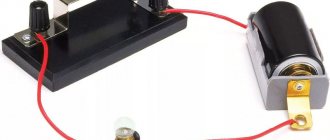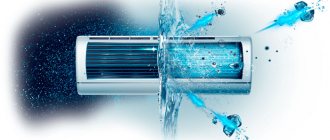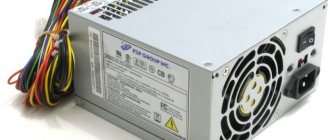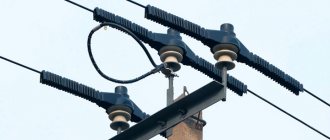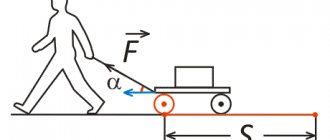Various questions regarding electrics and everything connected with it
Height of sockets and height of switches
There is a lot of controversy about how high from the floor sockets and switches should be located. According to the current trend, switches are placed at hand level, that is, in such a way that, if necessary, the user does not have to reach for the switch when turning on the light. As for the sockets, they are placed a little lower (usually at a distance of 50 cm from the floor).
Be that as it may, there are no technical restrictions. That is, everyone chooses individually at what distance to place the socket or switch.
Which socket is better, ceramic or plastic?
As practice shows, “core” sockets, which are made of ceramic, are more durable and reliable. In addition, such sockets can withstand heavy loads - you can be sure that the ceramic socket will not melt when connected to it and operated for a long time, for example, by a powerful electric heater.
Is it possible to install an outlet in the bathroom?
Someone will say that there is water there, which means that any electrical appliances are simply not allowed there. A counter question - what about the lighting and its switch, which are located in the bathroom? After all, they are also exposed to moisture and, accordingly, are also under voltage all the time. What's all this for? And besides, it is quite possible to install sockets in the bathroom, and it will be completely safe. The only thing: you can’t place sockets in close proximity to water sources - faucets and other plumbing equipment.
Note that for those who still doubt safety, we can recommend purchasing and installing special sockets for the bathroom. Such sockets are protected from moisture and are absolutely safe (at least that’s what the manufacturers say).
The color of the wires is phase zero earth, what markings exist?
The modern market offers a large assortment of a wide variety of electrical cables, the cores of which have a wide variety of color markings. However, it must be remembered that, as a rule, a conductor with yellow-green insulation is intended for grounding, a conductor with blue insulation for the neutral conductor, and a conductor with red insulation for the phase conductor.
How to properly connect a telephone wire?
Of course, the question of connecting a telephone wire has an indirect rather than a direct relation to electrical issues. However, since it is asked quite often, it would be unfair to ignore it. So how do you connect a telephone cable? The best option here would be to use a special mounting box in which the conductors are connected to each other using terminals pressed with screws. If there is no such “device” or the connection needs to be made quickly, then it is quite possible to connect the wires in the most common way - the twisting method. In this case, special attention should be paid to the insulation of the conductors among themselves and the general insulation of the connection made.
What can be used instead of electrical tape?
Quite often there is a need to perform one or another electrical work, which involves the need to ensure reliable insulation. It also often happens that there is no insulating tape at hand and you have to work hard to figure out what to replace it with. What can replace electrical tape? The best option in this case would be to use PVC pipes or special heat-shrinkable pipes. If you don’t have them either, you can use almost any adhesive dielectric - tape or medical plaster - as insulation.
That's all, I hope. Our electrical questions and answers will help you solve any electrical problem.
We recommend that you read:
- PROTECTIVE NULLING
- COPPER WIRES FOR ELECTRICAL WIRING
- LED LIGHTS
- CALCULATION OF ELECTRIC CIRCUITS
Author – Anton Pisarev
Questions about electrical wiring, connection and laying of electrical wires
Which is better internal or external wiring?
There is no clear answer to this question. The thing is that both variants of electrical wiring are quite acceptable and have their own distinctive features and advantages. Thus, the advantages of external (open) electrical wiring include higher installation speed, as well as higher efficiency - in other words, the costs of installing external wiring are somewhat lower than when installing internal wiring. If we talk about the advantages of internal electrical wiring, then we should mention higher reliability and a more attractive appearance.
Today, external electrical wiring is used mostly in wooden houses or small country houses, that is, where there is no or no wall plaster in which the electrical cable could be “hidden.” Note that in the case of external wiring, the electrical cable must be hidden in a corrugated pipe to increase the electrical and fire safety of all electrical wiring. You can read more about external and internal wiring in the material “Installation of electrical wiring.”
Which wire is better, copper or aluminum?
As in the above question, there is no definite answer here and cannot be. Although, of course, by modern standards, copper wire is preferable, because it can withstand higher current loads and, accordingly, can withstand greater power. On the other hand, aluminum wire is cheaper, which makes it the best option for organizing power supply in domestic premises or country houses.
Is it possible to combine copper with aluminum?
Absolutely forbidden. The fact is that copper, in interaction with aluminum, begins to quickly oxidize, as a result of which reliable contact is lost, and the wire core begins to gradually deteriorate. Of course, temporarily connecting a copper and aluminum conductor by simple twisting is quite acceptable, but connecting such wires, for example, in a groove when organizing internal wiring is prohibited. In such cases, special connecting blocks or some other methods of connecting wires are used.
Fastening the wire in the groove - how is the wire secured and is it necessary at all?
As you might guess, we are talking about internal wiring, which involves hiding electrical wires in grooves and then plastering them. Do I need to secure the wire in the groove? In principle, you can do without fastening, because the wire will already be securely fixed in the wall due to the plaster mixture, although in some cases the wire is still fixed in the groove for greater convenience of subsequent plastering (in other words, so that the wire does not come out and interfere with sealing the grooves). As for fastening, this process is carried out using special clamps or so-called “clips”.
The depth of cable laying in the ground - what should it be?
Quite often, especially when arranging country houses, there is a need to lay an electrical wire underground - in a previously prepared trench. This method of supplying electricity is much more rational compared to organizing an overhead power line.
But let's return to the question asked. So, what should be the depth of the trench? In this case, everything depends on the characteristics of the soil and the entire area as a whole. As a rule, the depth of laying the cable in the ground is within 30 cm - 1 meter. At the same time, regardless of the depth to which the wire is hidden, it must be enclosed in a corrugated pipe in order to additionally protect its external insulation.
Is it necessary to install an RCD to protect electrical wiring?
For those who are not in the know: RCD is a residual current device. The main purpose of installing this device is to protect a person from possible electric shock in the event of a leak caused by damage to the insulation of electrical conductors. Is it necessary to install an RCD? Of course, installing such protection won’t hurt – this is probably clear to everyone. But nevertheless, this is not a mandatory measure - if you have reliable wiring and circuit breakers installed, you can completely do without an RCD.

